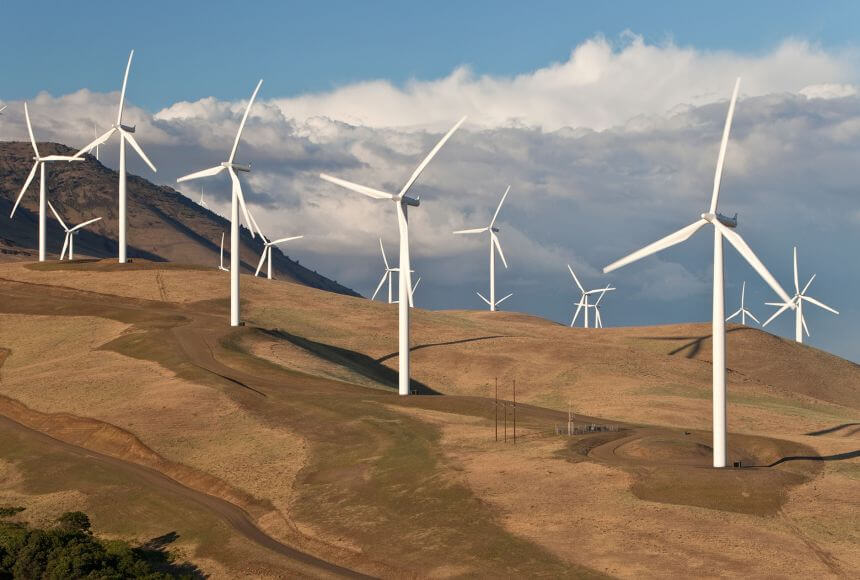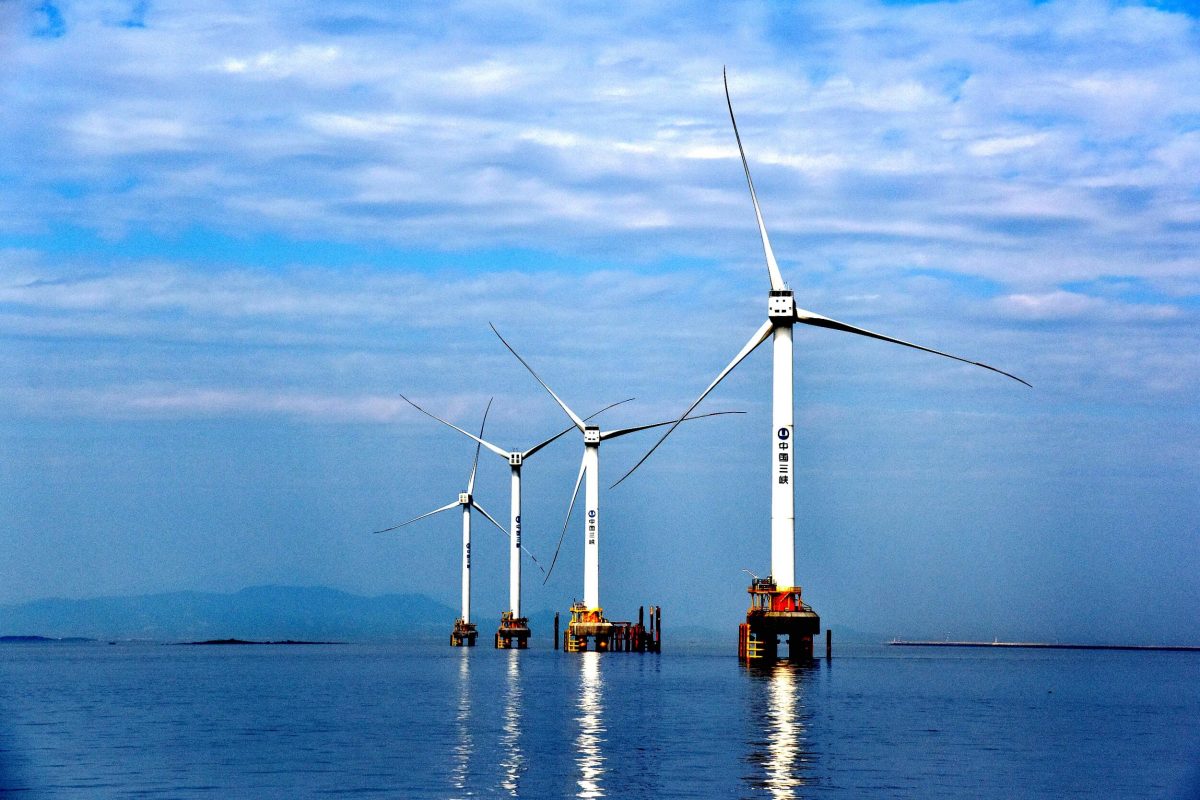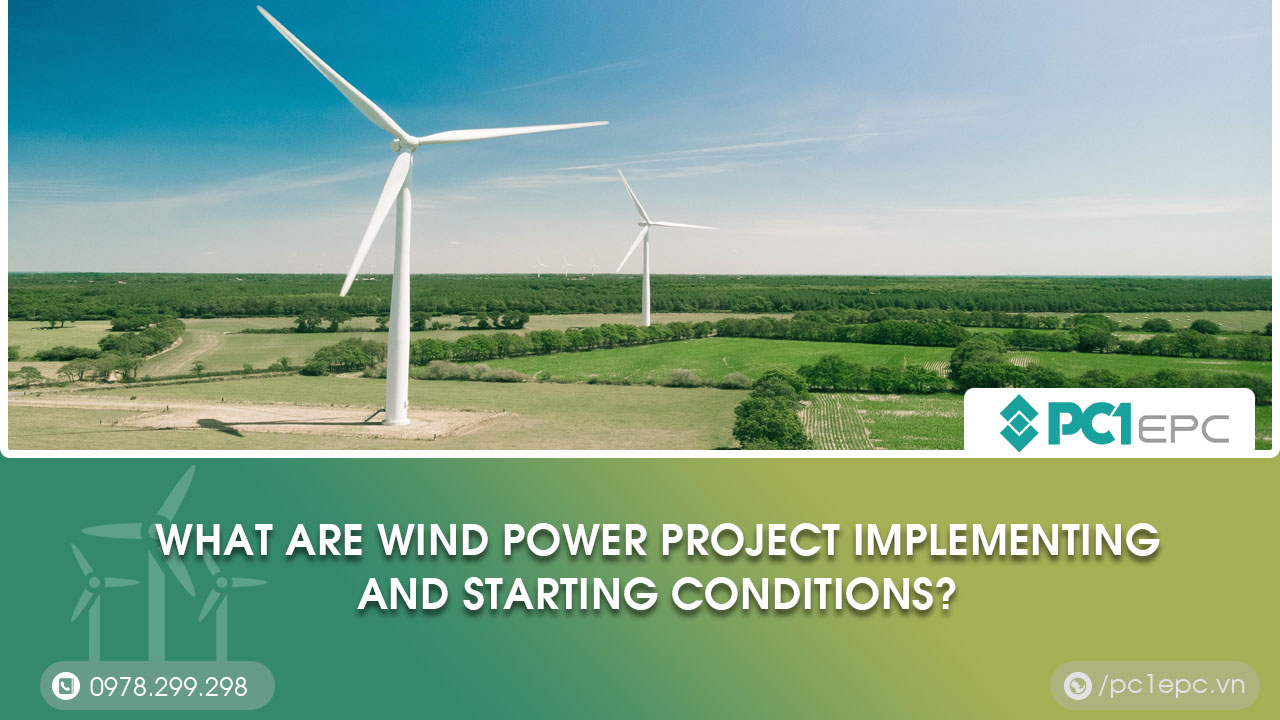Wind power, like solar electricity, is becoming more popular as a result of its environmental benefits. At present time, Vietnam has a few wind power plants that operate to serve the electricity grid in some areas. There are Dai Phong wind farms in Binh Thuan province, Dam Nai 2 wind power plant in Ninh Thuan Province, and one called Hoa Binh 2 in Bac Lieu province…They help reduce pressure on the national power grid and contribute to meeting the needs of citizens. What are the important conditions that affect wind power project implementing? Do people know about the requirements for equipment used in construction? In this article, PC1 will give you some information about this topic.
Why is wind power project implementing necessary?

The fact is that non-renewable energy sources such as coal, oil, and gas are running out. Wind power is considered an alternative energy source that is abundant and has great potential in the future. Thanks to wind turbines, wind power is converted into electricity, offering a sustainable option in the pursuit of renewable energy. It minimizes the impacts of climate change and makes up for the shortage of non-renewable resources.
Aside from that, wind power facilities generate a significant amount of profit. After being put into operation, the IA BANG 1 Wind Power Plant is estimated to supply the national grid with 163 million kWh of electricity each year, enough to power up to 25,000 houses. Revenue is equivalent to 319 billion VND and contributes to reducing the load of 141,411 tons of CO2 emissions.
The necessary conditions and prerequisites for implementing and constructing wind power projects
A wind power project can start and be carried out after fully meeting the legal provisions on construction investment management and environmental protection requirements. And it is also necessary to ensure the following regulations:
- Have the construction design documents appraised and approved.
- There is a signed power purchase and sale contract with the Power Buyer.
- Having a contract to provide finance and a commitment to capital sources to ensure the construction progress is on schedule in the approved construction investment project.
Requirements for equipment used in the construction
The equipment used in the construction of wind power projects must meet the following requirements:
- Ensure that Vietnam’s standards, technical regulations, or international standardization are IEC or equivalent.
- The machinery used to build wind power projects must be brand-new, have a factory term of no longer than five years, and come with a complete Certificate of Origin and a Certificate of Appropriate Production. If you want to use wind power equipment that has been used or shipped for more than 5 years, you must inform the Ministry of Industry and Trade and coordinate with relevant agencies for consideration and decision.
What should be evaluated before a wind power project implementing?
Wind energy power evaluation
Consider the wind resource potential at the location of installation before implementing wind power projects at factories. Furthermore, in order to assess the potential of wind resources at the construction site, topography and climate characteristics such as wind through the seasons must be taken into account.
Construction condition evaluation
It is important to check whether the terrain and road conditions are suitable for heavy vehicle traffic. It is also necessary to assess the future practicability of expanding wind power plants.
Future planning evaluation
To develop plans to scale up wind power plants in the future, evaluate and take into account the scale of the installation area and related conditions.

Overview of wind power development process
Phase A: Preparation
This phase begins with the determination of the potential point and ends when the project investor makes a deposit and receives the Power Purchase Policy Approval. It is important at this stage to clarify whether the project site has been included in the National/Provincial Wind Power Development Plan. This is a condition that determines the next steps of project development.
If the project site is already included in that then:
- If there is no wind data at any point, the project investor should conduct wind measurement soon.
- For points where wind data is available, in order to access loan funds, investors should conduct wind measurements according to international standards.
It is better to conduct wind measurements early to shorten the project development time. The estimated time for this first phase ranges from 6 months to 1.5 years for sites where wind data is available and from 1 year to 2 years for sites where wind data is not available. (minimum time is 1 year).
If the project site has not been included in the National/Provincial Wind Power Development Plan, this preparation phase may take 1 to 2 years for the investors to apply for the project to be added to the overview plan.
Phase B: Project development
This phase begins with the Investment Decision or Feasibility Study and ends with the start of the implementation phase. During this stage, the investor must obtain certain agreements and permits, such as Grid Connection Agreement, Measurement Agreement, Construction Permit, etc. To obtain these documents, we need to conduct eligibility research, which will include all the necessary inputs and information to obtain the agreement and license. This phase is expected to be completed in 1 to 5 years, depending on the quality and results of the Feasibility Study, in which case the Feasibility Study may be required for more explanation.
Phase C: Project implementation
Before moving to construction, the investor needs to have a Detailed Design that fully shows the specifications, materials used, infrastructure details, and all other detailed planning requirements. These things need to follow international and domestic regulations. This detailed design is based on the Technical Design approved at the Project Development Phase.
Phase D: Operation & Maintenance
Before the COD date, the investor must conduct an inspection and acceptance test when the plant is inaugurated and put into operation and prepare the acceptance report. If there are still quality problems not affecting the basic parameters of the factory, the investor may decide to take conditional acceptance for some work items. The basic parameters above can be mentioned, such as electrical capacity, plant life cycle, and operational safety, etc. However, they must ensure the minimum safety requirements.
At the end of the trial operation period, the investor is responsible for not only preparing plans and documents for the plant operation but also the annual maintenance plan. For factories/plants with 30 MW or more, the warranty period is at least 2 years with a minimum warranty of 3% of the investment cost for operation and maintenance. In addition, every year, the owner must register the maintenance schedule of electrical equipment. Then request approval from the National Load Dispatch Center.
For plants under 30MW, the warranty period is at least 1 year with a minimum warranty of 5% of the investment cost for operation and maintenance. The owner then needs to annually register the maintenance schedule of electrical equipment to request approval from the Regional Load Dispatch Center.
Stage E: Stop exploitation and Dismantling
After the completion of the project operation phase, the wind power facilities will be upgraded, repaired, or stopped from exploitation and use. If exploitation is stopped, the project site must be restored to the original land use status. Decommissioning means removing all wind turbines, offices, and all other structures above ground. Foundations and roads are repaired to return the site to its original state. Depending on the land use planning in the project area, items such as power lines and other common electrical installations with usable functions may be retained. Otherwise, it will have to be dismantled.
The government has always supported the development of wind power in Vietnam to meet the global trend of exploiting clean energy sources. More and more projects and wind power plants are being built in our country. Therefore, EPC PC1 Electrical Construction Joint Stock Company is always ready to become a wind power partner for your next project.

Final thoughts on Wind power project implementing
Wind power is one of the oldest energy sources used by humans. Wind energy has numerous advantages, as it’s the most efficient technology for producing energy in a safe and environmentally friendly manner: it emits no greenhouse emissions, is local, renewable, competitive, and generates income and jobs.
See more:
- Wind farm construction – The rising strength of EPC PC1
- Renewable energy solutions for the 4.0 era
- Energy storage solutions provided by PC1 Group
- Digital energy solutions provided by PC1 Group
- Supply of electrical equipment and material provided by PC1 Group


